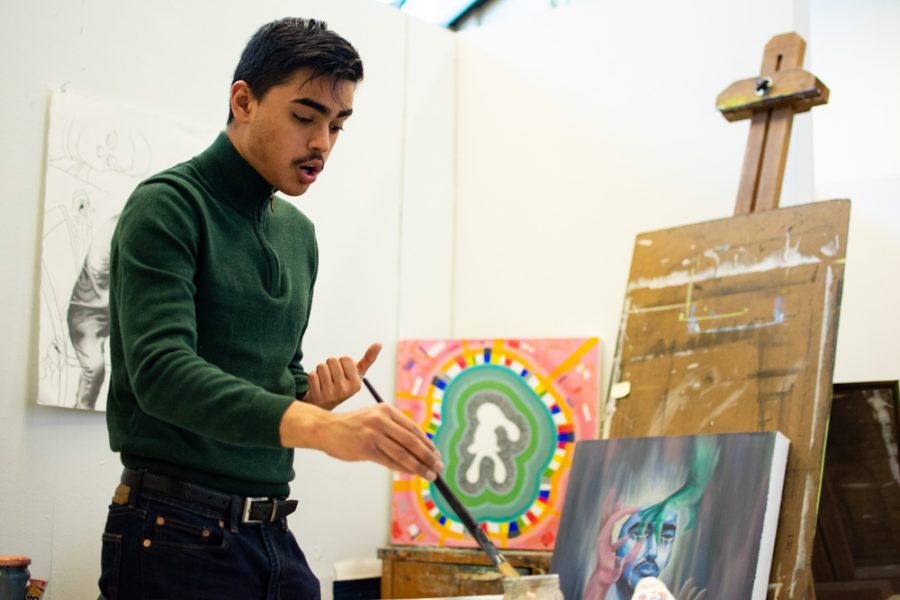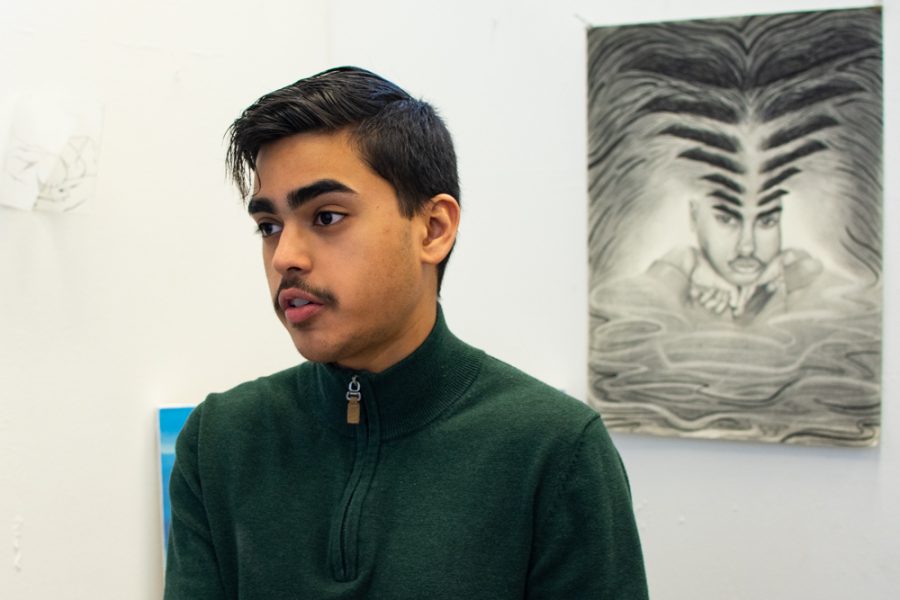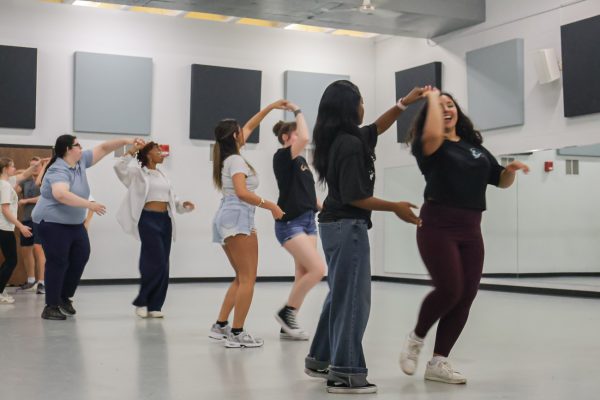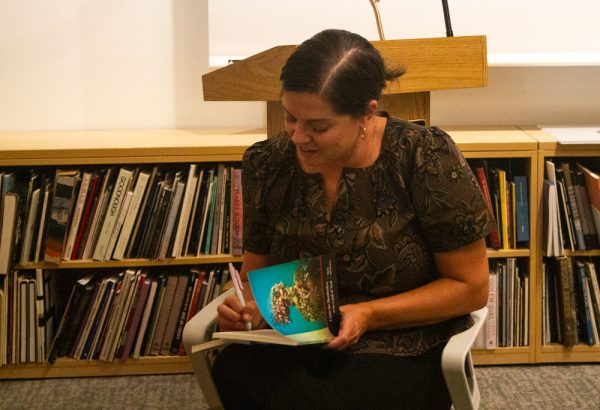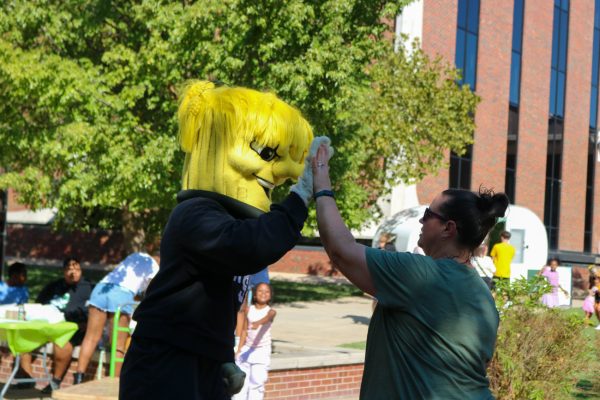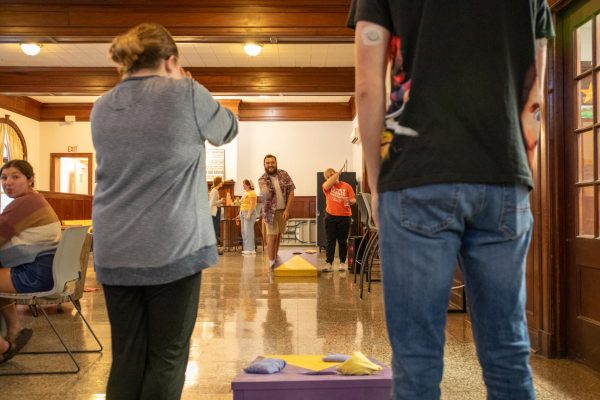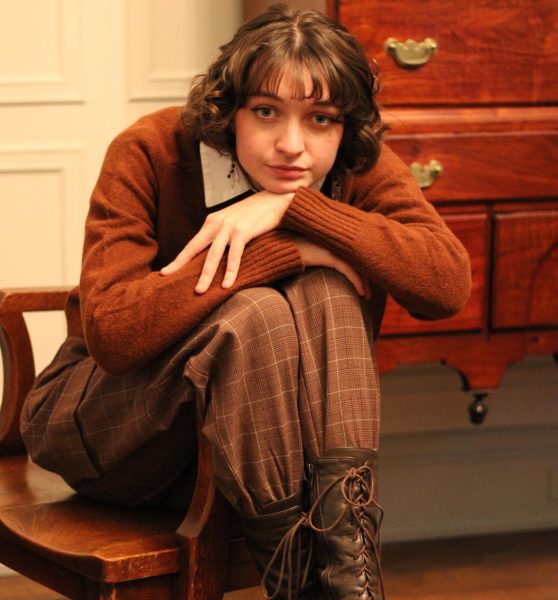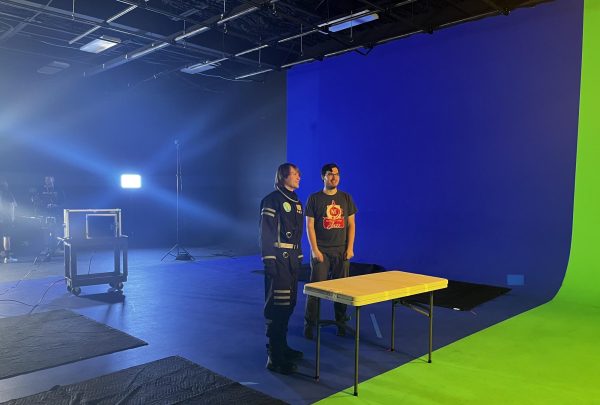Emotional landscapes: Emiliano Molina’s portraits turn the self into a revelation
Emiliano Molina responds to questions during an interview with The Sunflower while he begins the process of painting two new pieces.
A silhouette of Squidward lurks in the corner of Emiliano Molina’s studio, yet amazingly, it isn’t guaranteed to catch the eye of a visitor right away. There are simply too many incredible things to look at in the small space where Molina creates and displays his new work. One is equally likely to get lost in the rich, textured lines of Molina’s striking black & white portraits, or get swept in the rich evening violets of his landscape paintings.
Molina himself, however, occupies the studio as if oblivious to his past work. It’s a Friday afternoon, and the artist, a Wichita State senior, has just a handful of hours between his morning class and his shift at work.
On the worktable before him, he adds sweeping grey brushstrokes to two canvases. The pieces look unlike anything else in Molina’s studio, and there’s a reason for that — he’s trying to challenge himself by moving away from his comfort zone. Instead of creating new versions of the stunning life-like portraits that adorn his studio, Molina is trying to do something new.
“I’m mostly a drawer, but I do love to paint,” Molina said. “I’m trying to incorporate both elements. I’m going to draw on the canvas with my figures, then draw around it too.”
Molina’s figures — drawn portraits — have become his calling card. Each portrait in his studio melds experimental techniques and designs with lifelike faces. The drawings are both precise and highly emotional, two qualities which stem from his surprising — but perhaps not unfamiliar — first steps as a visual artist.
“I’ve been doing art ever since I was little,” Molina said. “The very first time I started doing art, I used to trace Pokemon. I’ve loved Pokemon ever since I was a kid.”
The process of recreating figures, combined with the emotional tenor of the subject material, radiates that primary foundation for Molina’s art. Now, he filters his personal emotional experiences. Perhaps the most striking piece in his studio is a self portrait in which Molina’s eyebrows radiate in waves upward from his face, where they ultimately merge and blend into a texture that enshrines the central face. The stunning artwork is a product of feelings that Molina said he has grappled with for most of his life.
“Whatever you see in my art is what I’m feeling,” Molina said. “I used to always be self-conscious about my eyebrows. Naturally, I do have a unibrow. And so I took a serialist approach to this – I emphasized the eyebrows. I projected my insecurity into my work with art — try to make into something more aesthetically pleasing.”
Now that Molina’s honed his craft through both technical and emotional growth, he must turn to the more business-side of art — crafting a portfolio that will function as a resume of sorts for graduate school applications. Molina must create a series of works that showcase both technical ability and emotional impact. Then, he plans on taking a break from school to gain the type of real-world experience that graduate programs like to see in their applicants.
Thankfully, Molina’s got a bit of an advantage in that regard already. He’s worked time and time again with the Wichita art community to help turn his abilities into a practical asset. He works at ShiftSpace to help bring WSU art to the city at large, and he’s dived into the local scene to find inspiration among those who live and work in the same space as himself. At the heart of his success is a passion for his studies that goes far beyond the classroom.
“When I’m making art, I don’t think of it as my homework,” Molina said. “I just think of it as my practice — what I want to do with my life.”

John Darr was a reporter for The Sunflower. His main interests were local art, student life, experimental literature and ambient pop music.

Easton Thompson was a photographer for The Sunflower. Thompson majored in communication with an emphasis on electronic media. He is from Wichita, Kansas.



